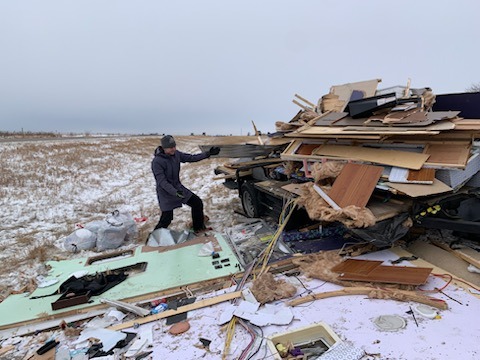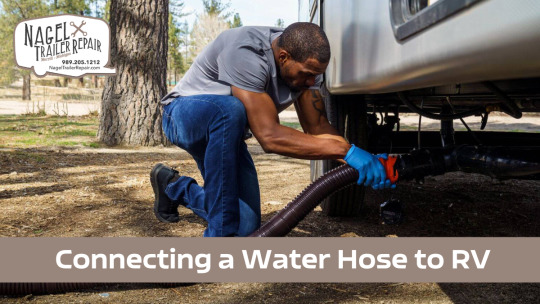#rvfulltimers
Text







#yeri moodboard#grey aesthetic#loona moodboard#twice icons#black moodboard#celebrities#chuu icons#kpop#messy aesthetic#green moodboard#fashion#rvfulltime#red moodboard#red velvet#yeri messy locs#86 light novel#jennie moodboard#jisoo blackpink#joy moodboard#doja cat grammy award#yellow moodboard#messy icons#miraculous ladybug
61 notes
·
View notes
Text
seulgi Locks 💜




#seulgi#seulgi lockscreens#seulgi wallpapers#seulgi wallpaper#seulgi lock#seulgi red velvet#red velvet#kpop#kpop lockscreen#kpop locks#kpop wallpapers#irene#joy#yeri#rv#rvfulltime
126 notes
·
View notes
Text


Hello, fellow hellsite weirdos. Assistance is needed.
I travel for work 8 months out of the year selling swords at rennaisance faires around the US, and for those 8 months I live out of my travel trailer. That has now been smashed into a thousand pieces like a piñata at God's birthday party, some black ice the bat, my worldly possessions the candy.
I was heading home for Christmas and hit some black ice and the trailer ended up flipping into the median. I didn't hit anyone, my truck my cats and I were fine, and I was able to recover a decent amount of my stuff, but I'm homeless(er).
I'm aiming to have my trailer replaced by the end of the Arizona Rennaisance Faire, so in about 2 months. I'm still talking to insurance and I'll be saving myself and selling my crochet work but if anyone could spare even a couple bucks to make this as smooth and quick as possible or even just reblog this it would help immensely.

#ren faire#ren fest#rennaisance faire#rennaisance festival#rennie#travel trailer#vanlife#traveler#nomad#camper#rv life#rvfulltime#gofundme#halp#fundraiser#donations#please donate
14 notes
·
View notes
Text

Monte Rosa, Zermatt, Switzerland. Photo by Samuel Ferrara.
#rvlife#camping#rv living#adventure#traveling#rvadventures#travel#campfire#rvliving#travel photography#rvcamping#rvfulltime#rvlivingfulltime#vanlife#vanliving#hikingadventures#hiking#naturepics#beautiful photos#photooftheday#nature photography#travelphotooftheday#switzerland#travels#naturephotography#nature
4 notes
·
View notes
Text
A Step-by-Step Guide: Connecting a Water Hose to Your RV for Beginners

Embarking on a memorable RV adventure in Michigan requires proper maintenance and understanding of essential tasks, such as connecting a water hose to your RV. As a beginner, you might feel overwhelmed by the process, but fear not! In this step-by-step guide, we'll walk you through the easy and essential steps to connect a water hose to your RV. For any complex maintenance tasks, remember to seek the expertise of professional RV camper maintenance services in Michigan to ensure a smooth and enjoyable journey.
Step 1: Gather the Necessary Equipment
Before you begin, make sure you have the required equipment on hand. You'll need a potable water hose specifically designed for RV use. These hoses are typically made of safe materials that won't impart any undesirable taste or smell to your water supply. Ensure that the hose length is sufficient to reach the campground's water source without any strain.
Step 2: Turn off the RV's Water Pump
Before connecting the external water source, turn off the RV's water pump to avoid any complications during the connection process. The water pump should be switched to the "OFF" position to prevent any accidental flooding inside the RV.
Step 3: Locate the RV's Water Inlet
Find the water inlet on the exterior of your RV. It is usually marked with a "city water" label and can be found on the side of the vehicle. The inlet may have a cap covering it to protect it from dirt and debris.
Step 4: Connect the Water Hose to the RV
Carefully remove the cap from the water inlet, and then attach the female end of your water hose to the RV's water inlet. Twist it clockwise until it's securely fastened, ensuring a leak-free connection.
Step 5: Connect the Other End to the Campground's Water Supply
Now that the water hose is securely connected to your RV, it's time to attach the other end to the campground's water supply. Locate the water hookup at your campsite and connect the male end of the water hose to the campground's water spigot. Again, twist it clockwise until you have a tight and leak-free connection.
Step 6: Turn on the Water Supply
With both ends of the water hose securely connected, it's time to turn on the campground's water supply. Slowly open the water spigot to allow the water to flow into your RV's water system.
Step 7: Check for Leaks and Water Flow
After turning on the water supply, check the hose connections for any signs of leaks. Look for dripping water or wet areas around the connections. If you notice any leaks, turn off the water supply immediately and reevaluate the connections.
Step 8: Prime the Water System
To remove any air bubbles and ensure a consistent water flow, turn on the faucets inside your RV and let the water run for a few minutes. This process will help prime the water system and ensure smooth water circulation.
Conclusion
Connecting a water hose to your RV is a vital skill every RV enthusiast should master. By following this step-by-step guide, even beginners can confidently hook up their RVs to a campground's water supply. Remember to always use a potable water hose designed for RV use, and if you encounter any challenges or require more complex maintenance tasks, don't hesitate to seek the assistance of professional RV camper maintenance services in Michigan. With a properly connected water supply, you'll be all set to enjoy a comfortable and refreshing stay during your Michigan RV adventures.
#rvrepair#camperrepair#rvcamping#rvrepairmichigan#rvfulltime#rvtravel#rvrenovation#nageltrailerrepair
2 notes
·
View notes
Photo

Lord, we also ask for travel mercies for ourselves and others as we make our way to our next destination today. Amen!! Have a blessed Sunday, sweet friends! #thousandtrails #campgroundreview #believe #camping #RV #livinginanrv #rvlife #rvtravel #ourcrazyrvlife #rvfulltime #fulltimerving #Christian #blessings #lifeontheroad #rvadventures #rvlivingfulltime #rvcamping #traveltrailerlife #rvcouple #prayer #pray #Bible #God #Jesus #love #faith #rvlifestyle #Christ #sharethelove https://www.instagram.com/p/ClLwN49ub5_/?igshid=NGJjMDIxMWI=
#thousandtrails#campgroundreview#believe#camping#rv#livinginanrv#rvlife#rvtravel#ourcrazyrvlife#rvfulltime#fulltimerving#christian#blessings#lifeontheroad#rvadventures#rvlivingfulltime#rvcamping#traveltrailerlife#rvcouple#prayer#pray#bible#god#jesus#love#faith#rvlifestyle#christ#sharethelove
3 notes
·
View notes
Link
#wupples#wupplescars#rv#rvlife#rvliving#rvlifestyle#rvtravel#rvrenovation#rvfamily#rvcamping#rvremodel#rvfulltime#rvlove#rvpark#rvnomads
0 notes
Photo

We finalized our summer RV plans!! I know where we are parking until June 30th beyond that is going to be weather permitting haha Day 3 #alogentleposes | March 6-13 Let’s slow it down and bring in more mindfulness with 8 days of gentle asanas. Get cozy, feel free to grab props and wear something comfy as we do grounding and feel-good hip openers, backbends folds, and twists to restore our bodies 😌🧘🏽♂️🧘🏻♀️ Poses Day 1: Butterfly Day 2: Pigeon Day 3: Frog Day 4: Child’s pose Day 5: Fish Day 6: Bridge Day 7: Reclined twist Day 8: Legs up the wall/savasana Hosts: @yogawithrona @yoginiinheels @_emjayyogini_ @yogajeannee @eriwyattyoga @bethanysmithyoga ⠀⠀ Sponsors: @aloyoga @alomoves ⠀⠀ How to Participate: - Make your profile public - Follow all hosts and sponsors - Repost the flyer as a post, not a story or slide with the caption and tag some friends to join! - Post a video/photo daily using the hashtag #alogentleposes & tag all hosts and sponsors - Show some love to the gallery! #childspose #rvlife #rvliving #rvfulltime #fulltimervliving #fulltimervfamily #yogachallenges #aloyogachallenges https://www.instagram.com/p/Cpl-guyr4Gl/?igshid=NGJjMDIxMWI=
#alogentleposes#childspose#rvlife#rvliving#rvfulltime#fulltimervliving#fulltimervfamily#yogachallenges#aloyogachallenges
0 notes
Text





0 notes
Link
Very Clean Light Weight 2020 Trail Runner includes everything you need to camp the day you buy it!
I just lowered the price on this one today!
0 notes
Text
#rvtravel#rvlife#rvfulltime#rvadventures#rv#lifestyle#fulltimerving#digital nomad#rvcamping#rvlivingfulltime#our story
0 notes
Text

Fun gift idea for rv campers, snowbird campers, motorhome campers and anyone who camps with friends. See us at: https://www.teepublic.com/t-shirt/35764359-if-i-am-drunk-its-my-rv-neighbors-fault?store_id=1312657
0 notes
Text

Merry Christmas! Photo of village in Whistler, Canada taken by photographer Roberto Nickson.
#merry christmas#christmasday#merry chrismas 2022#christmas#rvlife#camping#adventure#rv#rv living#rvadventures#traveling#campfire#travel#rvliving#vanlife#vanliving#van life#van living#rvfulltime#rvcamping#rv life#rving#vanlifers#canada#naturephotography#naturepics#small town#vacation#vacations#holiday
3 notes
·
View notes
Text
How to Prevent Costly HVAC Breakdowns in Your RV Camper

Owning an RV provides the freedom to travel and explore with all the comforts of home, including an HVAC system to regulate the temperature inside your camper. However, just like any other piece of equipment, your RV HVAC system requires regular care and maintenance to function properly.
Neglecting it can lead to costly breakdowns, leaving you without heating or cooling when you need it most. Fortunately, there are several steps you can take to ensure that your HVAC system stays in top condition and runs smoothly throughout your travels.
1. Regularly Inspect Air Filters
One of the most common causes of HVAC failures is clogged or dirty air filters. In an RV, filters trap dust, dirt, and debris that circulate inside the camper. Over time, these particles build up and restrict airflow, making your HVAC system work harder than it should, which can lead to overheating or breakdowns.
How to Prevent It: Check your air filters every 1-2 months and clean or replace them as needed. RV air filters are typically easy to access, and cleaning or replacing them is a simple process. Reusable filters can be cleaned with water and mild soap, while disposable filters should be replaced with a new one.
2. Check Ductwork for Leaks or Obstructions
Your HVAC system relies on a network of ductwork to distribute air throughout the camper. If these ducts become clogged or develop leaks, it can lead to uneven heating or cooling, reduced airflow, and strain on the HVAC system.
How to Prevent It: Inspect the ductwork regularly for any signs of damage or blockages. Check for holes, disconnected ducts, or areas where airflow might be restricted. Sealing any leaks with duct tape or mastic can prevent energy loss and reduce the load on your HVAC system.
3. Clean the Evaporator and Condenser Coils
Your RV HVAC system has two coils: an evaporator coil inside and a condenser coil outside. These coils are responsible for transferring heat, either removing it from inside the camper to cool it or bringing heat in to warm the space. When the coils become dirty, they can’t function efficiently, which increases energy consumption and the likelihood of a breakdown.
How to Prevent It:
Make sure to clean both the evaporator and condenser coils at least twice a year, or more frequently if you use your RV regularly. To clean the coils, first turn off the HVAC system. Then, use a soft brush or vacuum to gently remove dirt and debris from the coils. Be careful not to bend or damage the fins.
4. Keep the Exterior Unit Clear
The condenser unit, located outside the RV, needs proper ventilation to work efficiently. If it’s blocked by leaves, debris, or other obstacles, it can cause the system to overheat and eventually break down.
How to Prevent It:
Check the area around your exterior condenser unit regularly. Make sure there’s at least two feet of clearance on all sides, and remove any leaves, branches, or other obstructions. This ensures proper airflow and helps the condenser cool effectively.
5. Monitor Refrigerant Levels
Low refrigerant levels are a common cause of HVAC breakdowns, especially during hot weather when the system is working hard to cool your RV. When the refrigerant is low, the system can’t cool effectively, leading to poor performance and potential compressor failure.
How to Prevent It:
It’s a good idea to have a professional HVAC technician check your refrigerant levels at least once a year. If you notice your system isn’t cooling as well as it used to or hear unusual noises, low refrigerant might be the culprit. Adding refrigerant requires specialized tools, so leave this task to a professional.
6. Check and Maintain the Thermostat
Your RV’s HVAC system is controlled by the thermostat, which regulates the temperature inside the camper. If the thermostat malfunctions, it can cause the HVAC system to work improperly or even stop functioning altogether.
How to Prevent It:
Check your thermostat regularly to make sure it’s functioning correctly. If you notice any inconsistencies in temperature or if the thermostat isn’t responding, replace the batteries or recalibrate it. Upgrading to a programmable or smart thermostat can also help you better manage your HVAC system and prevent unnecessary wear and tear.
7. Inspect the Fan and Blower Motor
The fan and blower motor are essential components that circulate air throughout your RV. If the fan blades become damaged or the motor starts to wear out, it can reduce airflow, increase energy consumption, and potentially cause a breakdown.
How to Prevent It:
Inspect the fan and blower motor regularly for any signs of wear, damage, or obstruction. Clean the fan blades to remove dirt and dust, and listen for any unusual noises coming from the blower motor. If you notice any issues, have the motor serviced or replaced by a professional.
8. Protect Your HVAC System During Storage
If you’re storing your RV for an extended period, it’s important to take steps to protect the HVAC system from damage. Lack of use, exposure to the elements, and pests can all cause problems that lead to costly repairs when you take the RV out of storage.
How to Prevent It:
Before storing your RV, clean and cover the exterior HVAC unit to protect it from dirt, debris, and pests. Additionally, make sure to cover any exposed ductwork or vents inside the camper. Run the system periodically during storage to ensure that all components remain in good working order.
9. Schedule Regular HVAC Maintenance
Even with all the preventative steps you take, it’s still a good idea to have your RV HVAC system professionally serviced at least once a year. A certified HVAC technician can inspect the entire system, identify potential issues, and perform routine maintenance that can extend the life of your system and prevent costly breakdowns.
How to Prevent It:
Schedule an annual HVAC maintenance appointment with a professional technician who is experienced in working with RVs. This should include a full inspection of the HVAC system, refrigerant check, cleaning of components, and any necessary repairs or adjustments.
10. Avoid Overloading the Electrical System
Many HVAC breakdowns occur due to electrical issues, such as tripped breakers or overloaded circuits. RVs often run on limited electrical capacity, and using multiple high-powered appliances simultaneously can strain the system, causing your HVAC unit to fail.
How to Prevent It:
Monitor your RV’s electrical load and avoid running too many high-energy devices at once, especially when the HVAC system is in use. If necessary, upgrade your electrical system to better handle the power demands of modern appliances.
Conclusion:
Preventing costly HVAC breakdowns in your RV camper is essential for ensuring comfort during your travels and avoiding expensive repair bills. By staying proactive with routine maintenance, you can significantly reduce the likelihood of major system failures. Regularly inspect and clean air filters, check the ductwork for leaks, clean the evaporator and condenser coils, and ensure the outdoor condenser unit is free of debris. Monitoring refrigerant levels, maintaining the thermostat, and inspecting the fan and blower motor are also crucial steps. Additionally, protect your HVAC system during storage and avoid overloading the electrical system to prevent unnecessary strain.
For RV owners, especially those in areas with varying climates, maintaining the HVAC system is even more critical. If you're based in Michigan, where both hot summers and cold winters can put extra strain on your RV’s HVAC, scheduling annual checkups with a professional is a must. Seeking RV camper repair in Michigan from an experienced technician can help catch potential issues early and ensure your system runs efficiently throughout the year.
Ultimately, regular maintenance and care will not only extend the life of your HVAC system but also keep your RV comfortable, no matter where your adventures take you. Whether you’re enjoying summer road trips or winter camping, a well-maintained HVAC system ensures your RV is ready for anything. Following these simple steps can help prevent costly breakdowns, keeping your camper in top shape for years to come.
#rvrepair#camperrepair#rvrenovation#motorhomelife#rv#rving#rvlife#michigan#rvfulltime#rvadventures#hvac services#hvac repair#hvacparts
0 notes
Photo

Amen!!! Have a blessed Saturday, everyone! #rv #rvlife #rvliving #believe #camping #livinginanrv #rvtravel #ourcrazyrvlife #rvfulltime #fulltimerving #Christian #blessings #lifeontheroad #rvadventures #rvlivingfulltime #rvcamping #traveltrailerlife #rvcouple #prayer #love #faith #rvlifestyle #dogs #dog #dogsofinstagram https://www.instagram.com/p/CnraC5HO2A3/?igshid=NGJjMDIxMWI=
#rv#rvlife#rvliving#believe#camping#livinginanrv#rvtravel#ourcrazyrvlife#rvfulltime#fulltimerving#christian#blessings#lifeontheroad#rvadventures#rvlivingfulltime#rvcamping#traveltrailerlife#rvcouple#prayer#love#faith#rvlifestyle#dogs#dog#dogsofinstagram
2 notes
·
View notes